Toy poodles: color variations, keeping and feeding
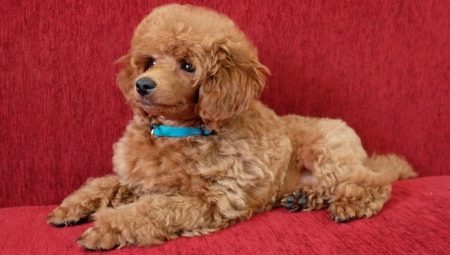
How often do we decide to have a pet and know absolutely nothing about the characteristics of the chosen breed. It is very important to realize that by bringing home a puppy, you are fully responsible for his health and life. The four-legged friend will love you and be faithful, and you cannot let him down. There are some breeds that have their own grooming characteristics that are not typical for other dogs. In this article, we will consider in more detail the requirements for the content of a toy poodle, find out an interesting story of its origin, and also get acquainted with the reviews of the owners.
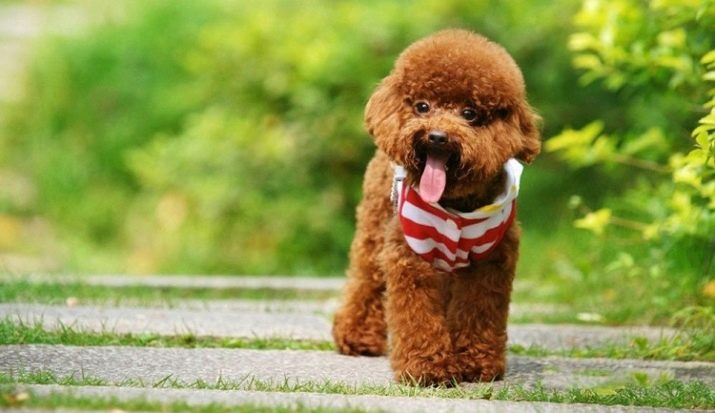
Origin story
The poodle itself is a very old breed of dog, reliable data on its origin have not been found, but there are references to them in medieval chronicles dating back to the 8th century AD. For the first time, dogs began to be depicted in paintings in the 15th century. At this time, poodles were in great demand in England, France and Germany.
Cynologists believe that the breed came about as a result of crossing several curly breeds of small dogs.that have evolved over time. It can be assumed that these breeds were: spaniels, barbets, retrievers, cops and greyhounds. By their nature, poodles are hunting dogs, they were used for hunting ducks and searching for truffles, thanks to their curly hair, they are less prone to injury, but this made movement much more difficult. And so they began to cut the breed.
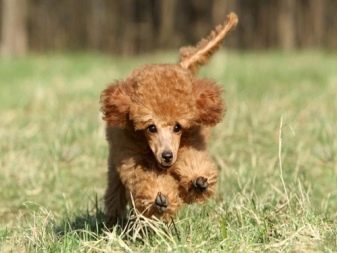
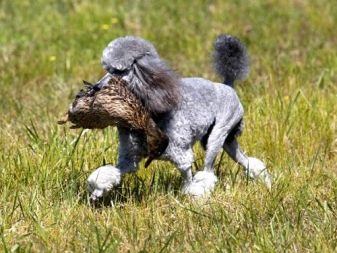
The dog received the name of the toy-poodle breed in the 16th century, when the French monarch Henry IV recruited several dogs for his protection. Having seen enough of the monarch, the close circle also wanted such dogs, and more and more often such dogs could be found at balls, not swamps. Due to the way of life, the poodle received the prefix "royal" in its breed.
In the 17th-19th centuries, the first salons for dogs appeared. Naturally, standards, fashion and haircuts are dictated by France.
The International Organization of Cynologists recognized France as the homeland of poodles. In the XX century, the breed began to be actively exported overseas, the range spread to the United States as well.
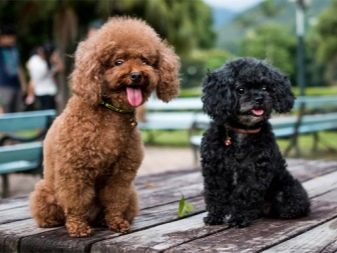
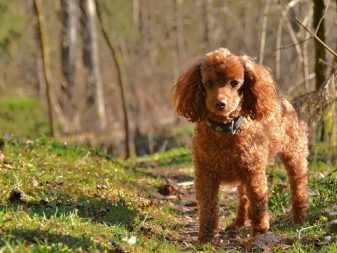
Description and character
Toy-poodle has a high intellect and malleable character for difficult training, a very companionable four-legged friend, tireless. An equally important advantage is its impressive appearance. The prefix "toy" is translated as a toy (and the truth is, the dog looks like it).
Despite its short existence, this breed received official confirmation from the International Organization of Cynologists about its breed.

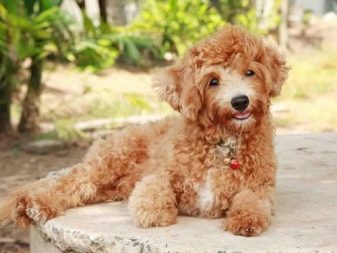
There is a standard toy poodle for shows.
- The dog's head is slightly elongated. The forehead is narrow, covered with hair. The nose is large and dark in color, with almond colored eyes close together.
- The ears widen downwards, slightly rounded at the ends, flat and hanging. Covered with curly hair throughout the area.
- As for the tail, it is docked in early childhood. Those who are against such a procedure leave it, even its natural length is allowed.
- The body is proportional, with strong, not very high legs, with well-developed muscles. The important gait and proud stance is ensured by the good posture of this breed with a high head carriage. The legs are collected in a ball and with neat pads, small in themselves.
- The weight of dogs varies from 2.5 to 3 kg, most often closer to the minimum indicator. The difference in weight is due to the fact that the breed combines 4 hybrids.
- The growth of tetrapods also depends on the breed and type of mixed hybrids, usually from 45 to 60 cm at the withers. In small individuals, from 24 to 28 cm.
- The color of poodles can be varied, but it is customary to count only 5 colors. Dogs of different colors differ externally in exterior from each other
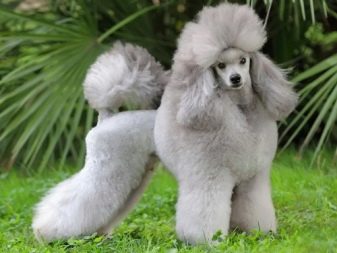

Color options
Official colors can only be in five varieties.
- Brown color of wool. It is customary to evaluate in relation to black. This type is rather difficult to breed due to the increased influence of many other genes. For example, the G gene eventually lightens brown to reddish or coffee-colored.
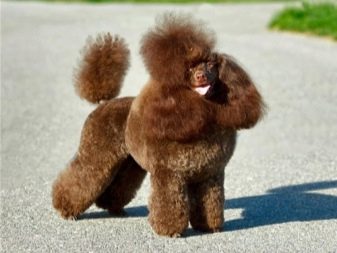

- Silver. This is the same black color, but brightened by genes and supplemented by early graying. The puppy is born black, and by the age of two it already becomes silver.
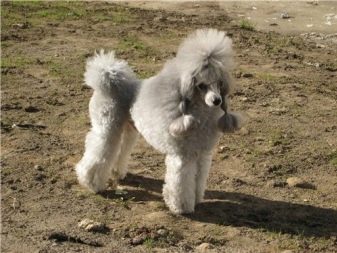
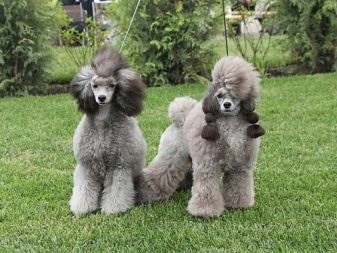
- Apricot (peach). In it, as in the previous two colors, there is a black color, this can be understood by the black color on the nose.
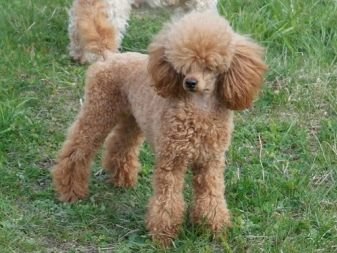
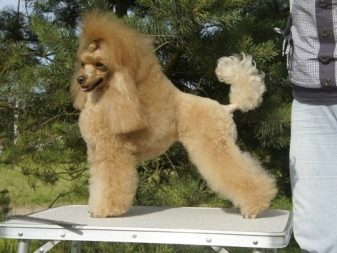
- Red. In newborns, it looks like a dark gray with red, but it is very susceptible to the gene for lightening and discoloration in the form of white spots on the chest and body.
This color is relatively new and the breeder needs to keep a close eye on the development of the puppies.
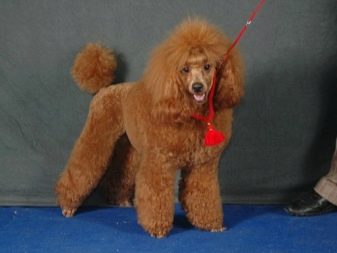
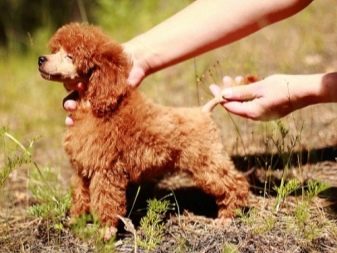
- Harlequin spotted color. This color is obtained when crossing white dogs with "truffle" skin and with a black genes of likability. This color was recognized in 2008.
Most often found in dwarf breeds, because the British dwarf poodle was taken as the basis for crossing.
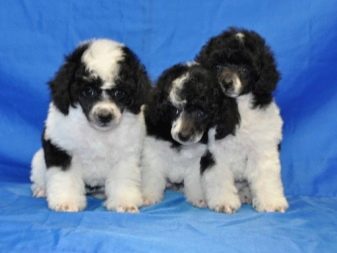
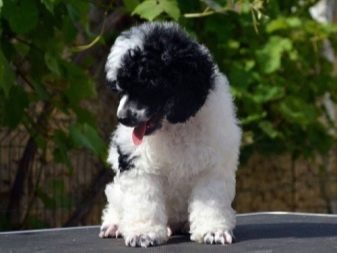
Miniature poodle
It differs from its relatives in its small size, due to which it makes itself a priority for choosing a pet for housing in an apartment. They are very outgoing and friendly by nature, so they become part of the family effortlessly. These dogs are attractive for buyers because they are non-conflict and get along very well with children, gentle and patient. The house will not have this bright smell of a dog, since the fur of these four-legged friends does not smell at all (of course, if they are bathed in time). It is often referred to as a micro or mini poodle.
In terms of its characteristics, it does not differ much from the toy poodle, because it is its direct relative.
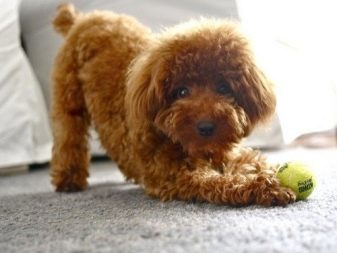
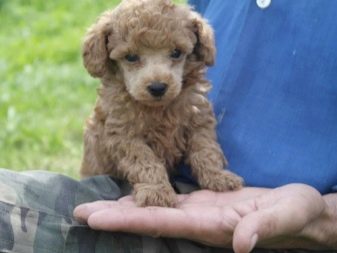
Pros and cons of the breed
When choosing a dog, responsible owners always calculate the pros and cons of the breeds for its maximum comfort and the comfort of the inhabitants of the apartment in coexistence with them.
Dogs of this breed will keep company in hunting ducks, but it should be borne in mind that the hunter from him (due to historical characteristics) is not the best, so there is no point in waiting for some fantastic results (this can be attributed to the negative sides of the doggie).
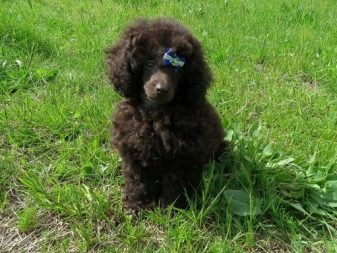
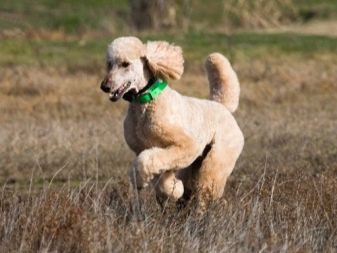
Often, the disadvantages of the breed can cause doubts among the owners when choosing a pet and even scare away, but you need to know about them so that they do not become an unpleasant surprise later.
- Poodle is often cowardly, very companionable, does not see danger in strangers at all, so there is no point in starting him as a guard. Not only a large dog, but also any loud sounds and sudden movements of both strangers and owners can scare a puppy, and an adult as well.
- If not properly trained, a dog can be dangerous to children.
- It is very often observed for an animal barking in situations where there is no threat.
- An increased ability to damage oneself to something, despite its proportionality in structure, the bones of fluffies are very fragile.
- High demands on care: balancing food, frequent showers, regular clipping of claws, washing ears and eyes, prevention of various diseases, timely haircuts and, ultimately, warm clothing.
- The dog is very mobile, you need to walk with it often and for a lot, and this may not please the owners with a sedentary lifestyle, because in addition to walking on the street, you also need to constantly play with the dog at home.
- The soreness of the dog can also be attributed to the negative aspects. The dog is at risk of diseases such as diabetes, leading to hemolytic anemia. It is genetically arranged so that the joints of the dog are very fragile, and osteochondrosis can develop up to the paralysis of the dog. Pets are also susceptible to such a dangerous disease as epilepsy (observed in many individuals of this breed), problems with the upper respiratory tract, leading to the collapse of the trachea. There is a high likelihood of loss of teeth and hair (baldness) in old age, more often there is a deterioration in vision and hearing closer to the end of the century.
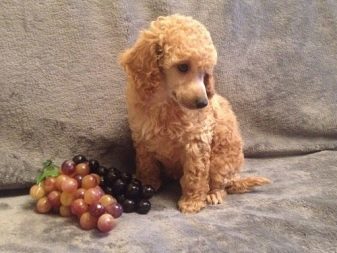
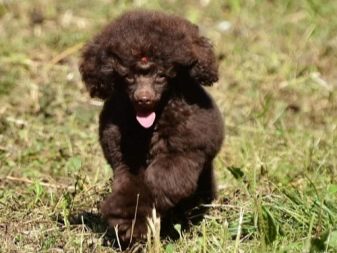
Considering all the disadvantages, we can conclude that with a decent upbringing, the poodle will become a real friend and the most loyal pet for the owners and family.
The best feature of this pet is its focus on interaction with humans, and they are not at all interested in their relatives of other breeds.
Dwarf poodles have many positive aspects, thanks to which they are happy to have them as pets:
- the coat is completely free of the smell typical for dogs;
- pets are perfect for people with wool allergies;
- due to their characteristics, hunting dogs are easy to train and educate;
- loyal to their masters, and love them very much.
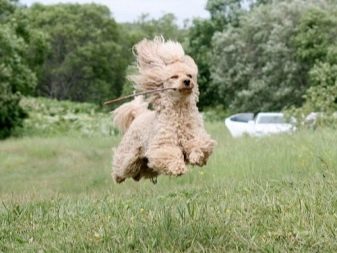
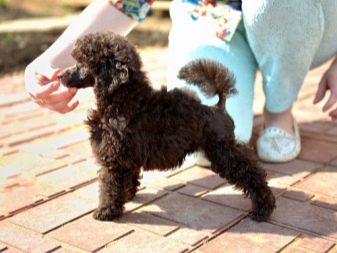
How long do dogs live?
The lifespan of a toy poodle depends on care and nutrition throughout its life, and can range from 15 to 25 years. With the right diet and frequent walks, the risk of illness decreases, and the chance for longevity of the pet is higher. Of course, the availability of all vaccinations affects life expectancy.
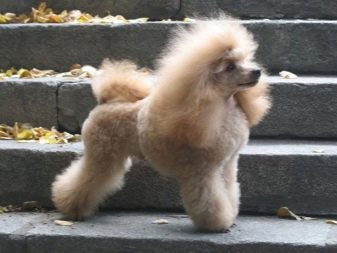
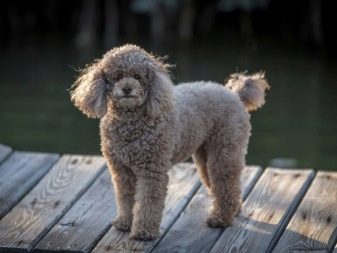
Pay close attention to your pet's physical and emotional health.
- You need to comb your pet every day, given its peculiarity of a high hairstyle, this is very important. Use a massage brush to comb out and wipe the coat with a damp warm towel after the procedure to relax the pores.
- To avoid the unpleasant smell of a dog at home, a toy poodle should be bathed more often than other breeds - from 6 to 8 times a month. Be sure to use a special shampoo with a complex of vitamins and herbs. As stated above, they are prone to baldness; in order to ensure strong hair bulbs, procedures must be done to strengthen them.
- After a walk, it is imperative to wash your pet's paws and stomach so that bacteria do not start, bathe as needed, but if he bathed in dust, then be sure to bathe.
- Temper the dog from a young age. To do this, you need to walk the puppy in any weather and play with him. But watch your pet's body temperature, do not overcool or overheat your pet. This can negatively affect the pet's vessels.
- It is impossible to let the dog go to swim in rivers, reservoirs on its own until 4 months, because the legs and joints have not yet fully formed, it may simply not be able to stay on the water.
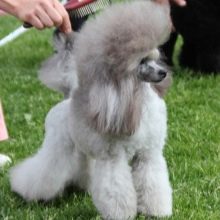
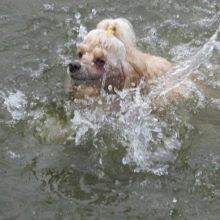

- The pet should be trimmed at least 1 time per month, and if it is summer, it is better more often so that the pet does not overheat.
- Trimming of nails should, like a haircut, be at least once a month (and look at the circumstances). It is necessary to carry out the procedure with special tools: a clipper in the form of pliers is more reliable than a scissor-like one.
- Train the dog to walk from the very appearance of the pet in the family. It is necessary to walk with him every 2-3 hours so that he understands that needs need to be dealt with only on the street. It is also necessary for the correct metabolism so as not to cause obesity in the dog.
- A mandatory event should be a visit to the veterinarian every six months, checking the teeth for stones, checking the coat for growth structure. Until the moment, until you have done all the vaccinations, it will be undesirable to take the dog outside. To preserve the health of the pet, it will be possible to take the puppy outside after the full quarantine period. In the meantime, train the puppy to the litter box. It is worth remembering that the tray will also come in handy in rainy weather. In no case should you take the dog outside in rainy weather, then the risk of catching the disease is several times higher.
At the age of one and a half months, the walk should not exceed the limit of 10 minutes.
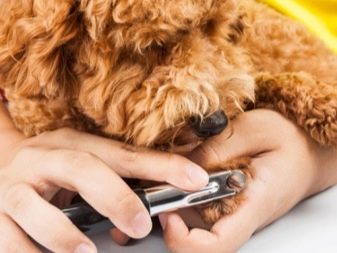
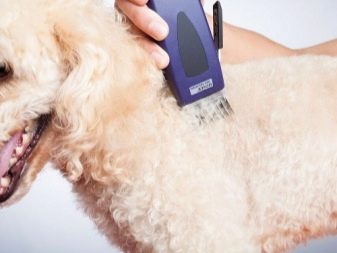
This breed is more sore than any other dog. This is due to historical factors, since dogs of this breed have always been "lisped", not lived, pampered, so their immunity is not adapted to hunting (as laid down by nature). Diseases of the joints, teeth, diabetes mellitus and high glycemic index are very common.
Airway problems (tracheal disease, such as collapse leading to the death of a pet), increased risk of serious illness such as epilepsy. And in old age, dogs are haunted by problems such as loss of teeth and hair, blindness (cataracts) and deafness. Some dogs are born with hearing problems.
If you monitor your pet's health throughout life, spend enough time outdoors, do all the vaccinations, organize proper nutrition, then you can not worry about the state of the dog's body in old age. The living conditions of a poodle in an apartment will directly affect the emotional state of the puppy and his well-being and self-confidence. And also on life expectancy.
Therefore, these points cannot be neglected.
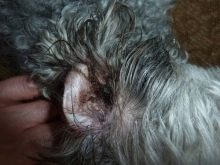
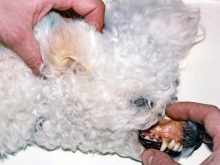
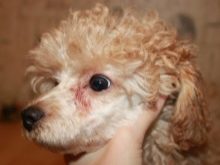
Content
Consider basic requirements for keeping a pet.
- The temperature in the room should not be lower than +16 degrees Celsius, so as not to cause hypothermia of the dog's body - this threatens with serious diseases, in addition to colds, this can cause pneumonia or swelling of the ears, which can also negatively affect the condition of the dog.
- It is necessary to provide a place for the dog so that it feels like a part of the family. It is desirable that drafts do not reach the dog's place and direct rays of the sun fall, preferably near the battery. The place should be equipped with warm blankets or special "beds" for dogs.
- The dog needs to clean the sleeping place so that it is always clean, it is unacceptable for the place to be dirty or unkempt, then the dog will be sad, its emotional health will suffer.
- The feeder should always be in one place, there should always be fresh and clean water in it so that the pet, if necessary, knows where to go to drink.
- In winter, you need to dress your pet for a walk, because the cold is very difficult for its body to endure. It is also worth remembering that clothes should be comfortable for walking and to cope with the needs of the dog.
- As for the leash and collar. It is very important that he looks decent in this, this is an important aspect of the dog's well-being. The more he likes himself in a collar, the more confident he will feel.
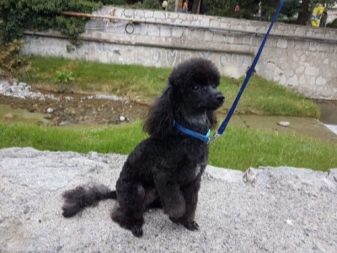
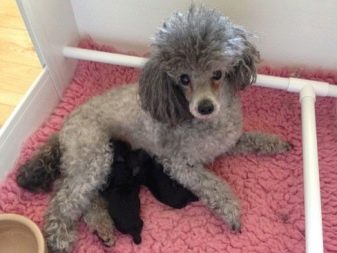
What to feed?
The condition of the teeth and coat depends entirely on the balance of the pet's nutrition. The owner has the right to choose dry food for feeding, but then you need to feed the dog once a day and only at night, calculating the required portion (25 g of dry food per 1 kg of weight). You can feed your pet with wet and wet food, according to the same principle, only you need to take into account that you need premium and super-premium food, they contain the most vitamins, and the percentage of meat is higher than in other food.
You can complete a balanced diet for your dog yourself. This will require eggs, cereals, meat (boiled chicken or pork) and fruits. But you need to be careful with fruits, choose only those that do not cause fermentation in the body, for example, you should not feed your dog grapes or oranges. You can add grated apple or crushed cherries to the porridge.
It is worth remembering that the health of a puppy throughout life and a decrease in the risk of chronic diseases depend on a correct balanced diet.
It is better, of course, to feed the puppy with natural food, but if it is not possible to constantly cook for him, then very carefully read the composition of the food that you choose.
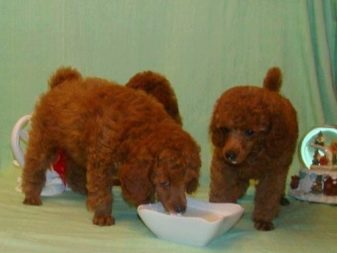
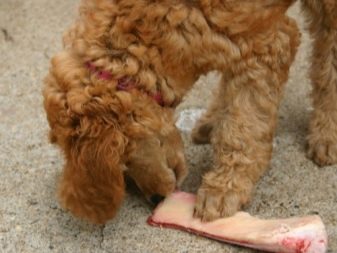
As soon as the pet appears in your house, it is necessary to include fresh greens and fish, boiled and boneless in its diet, little by little add fish oil to the food - it is very useful for the growing body and helps to strengthen the bones, which are very fragile in the toy poodle.
The puppy needs to be fed with vitamins, but just giving him a pill will not be successful, so they need to be mixed into the food. It is necessary to add vitamins such as B, A, D to the diet; it is necessary to consult a specialist about the dosage, as well as consult with the suppliers, which vitamins from which manufacturers and which class are better suited.
In no case should you hand feed the poodle, he must be accustomed to the feeder. If you choose to feed super premium food, then such mixtures are already balanced with enough vitamins, proteins, carbohydrates and fats for the healthy development of the pet.
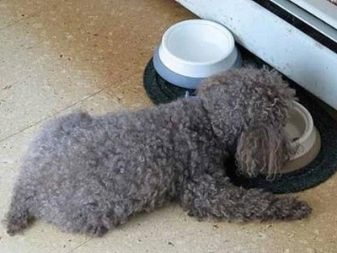
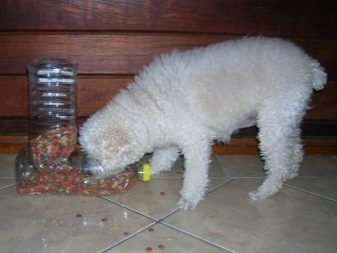
Owner reviews
The owners' opinions are divided: some believe that this is a very cute and useful animal, not very demanding. Easily adapts to family members, even a lazy family. The dog is very emotional, loves to be in the spotlight, it needs to be constantly “in the pack”. A very jealous breed, many note loyalty to the owners and loyalty to the family. If a pet has a personal place in the house, then its mood and condition is clearly better.
It is worth paying attention to the arrangement of the pet's life. He can sleep with you on a sofa or an armchair, but he must have his own territory - this is a guarantee of his self-confidence.
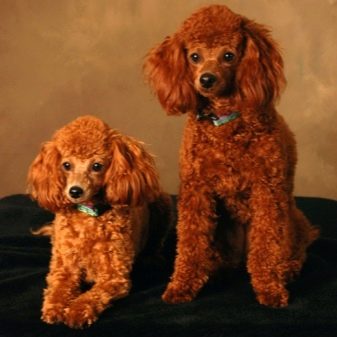
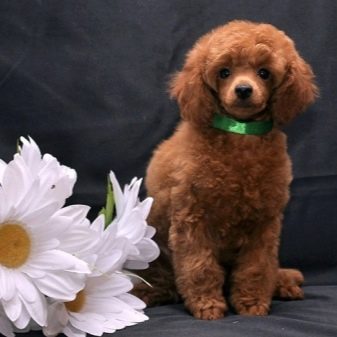
Other owners believe that a poodle in old age is very difficult to care for and is more like a punishment. In his declining years, a dog may have the following symptoms: suppuration of the ears and eyes, he sees and hears poorly, poor orientation in space. Epilepsy becomes more dangerous. If it is cold outside (less than zero degrees), then it is pointless to walk the dog, it will cry and will not want to walk.He starts going to the toilet wherever he gets to old age. From a young age, the poodle is young, handsome, playful, but then everything can change.
Based on this information already, you need to seriously think about whether you can afford the maintenance of such a capricious animal as a toy poodle. In addition to the costs before buying a pet (a place to equip, a feeder), keeping a pet is also quite expensive in the process of life (vaccinations, vitamins, balanced nutrition, and so on). And also the purchase of toys for outdoor games both on the street and at home, special shampoos and brushes for combing.
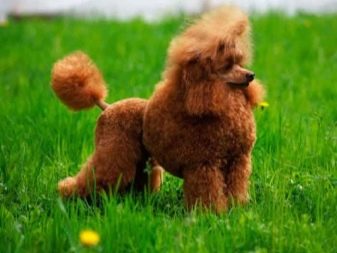
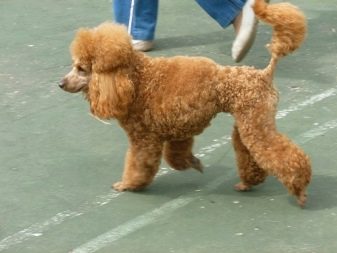
But it is worth remembering that in return you will get a very sympathetic friend and devoted to you and your family, who is able to give joy with his presence in your life. Although they say that a person chooses a dog, in fact, it is a pet that chooses an owner. Any toy poodle pet is able to fall in love with family members almost immediately. One has only to allow oneself to love a four-legged friend.
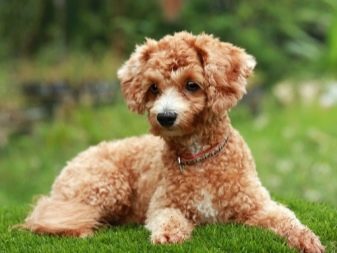
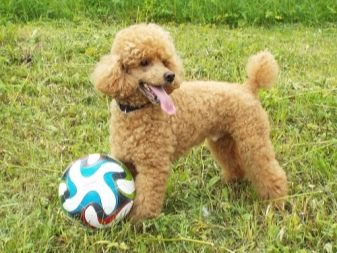
You can learn how to trim a toy poodle by watching the video below.






































